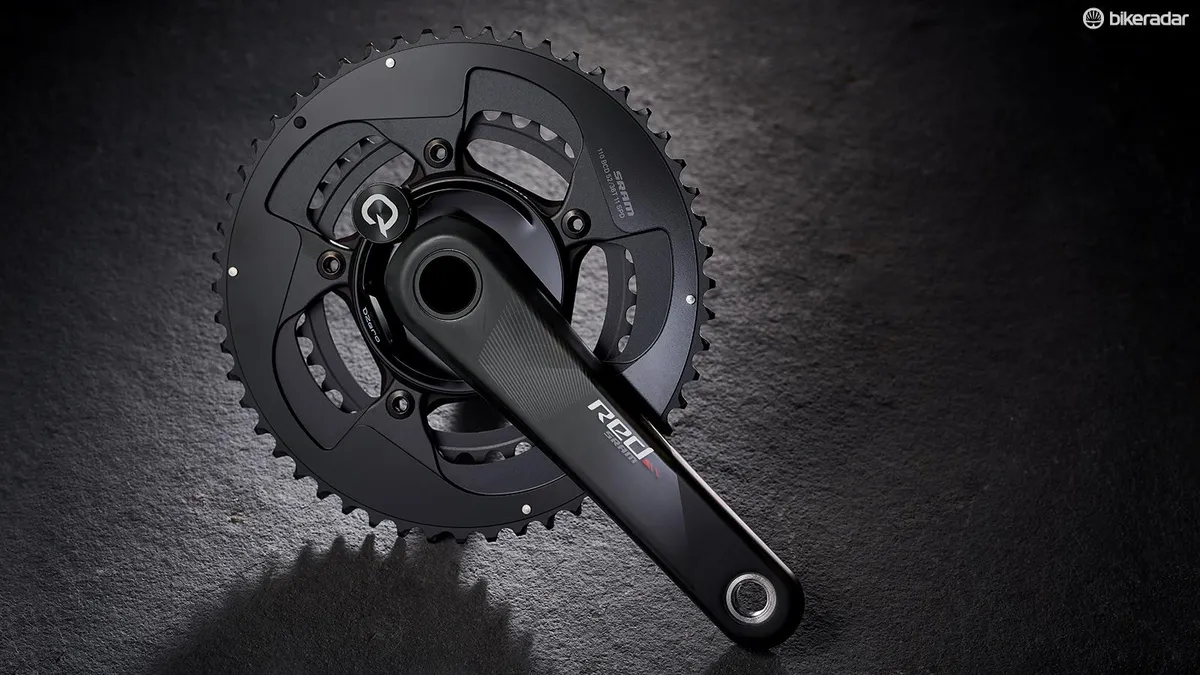Quarq power meters have always impressed us, with previous generations offering accuracy and reliability, and priced reasonably compared to the likes of SRM.
Older Quarq units were straightforward to set up, but not without their quirks, like having to bond a magnet to your frame to get cadence readings, and relying on a Garmin head unit with ANT+ for communication duties.
The new DZero comes from more than 10 years of development. It uses an inbuilt cadence measure called Axcad, which combines smart programming with the crank axle to accurately measure your pedalling rate.
Quarq has put together a clever piece of programming called Omnical, which means no loss of accuracy should you switch from a 40-tooth ring to a 58
Setting it up is no more involved than fitting standard cranks, and the calibration (zero offset) is just a case of unclipping from the cranks and selecting the calibration function from your head unit or phone.
The Bluetooth communication between the cranks and my Garmin and phone, via the Qalvin app, is low energy so battery life is extended over previous models. Changing the battery is simple; just remove the watertight cap and swap out the CR2025 coin cell for a fresh one.
At 560g for the cranks and power unit, not including chainrings, the DZero won’t be a weight penalty over a standard crank. When it comes to chainrings the DZero doesn’t need to be calibrated if you change between ring sizes.
Quarq has put together a clever piece of programming called Omnical, which means no loss of accuracy should you switch from a 40-tooth ring to a 58, or any combination in between.
I tested the DZero alongside my Garmin pedals and another bike running the older Quarq. The DZero’s numbers ran slightly lower, around one to two watts, over the previous Quarq, and three watts off the Garmin, which ran higher than both.
What did impress was the DZero’s power balance measurement, which ran inline with the Garmin’s — a 48/52 percent split between right and left. The Garmin measures this in real time with each pedal, while the DZero’s use a power balance calculation.
Consistency was good. I’ve used the DZero in some of the hottest days of summer through to now when temperatures hit zero or below, and the unit has remained accurate.

1. Chainring reaction: Quarq’s Omnical means you can swap chainrings without losing accuracy
2. Battery swaps: Simply lift the lid of the battery compartment to change batteries
3. Carbon cranks: Exogram hollow carbon fibre cranks are both light and strong
Qalvin BLE
The Qalvin app has been around for Quarq power meters for a while, but as the meters prior to DZero were ANT+ only you needed an accessory dongle to get the app to communicate with your meter. Now, thanks to the introduction of Bluetooth, it’s a simple touch of your smartphone’s screen.
With the app you can install firmware updates and run diagnostics. It also checks the battery voltage, and for those who are very tech orientated you can set zero offsets for multiple bikes, and change the power meter’s slope using the inbuilt calibration software routines.

